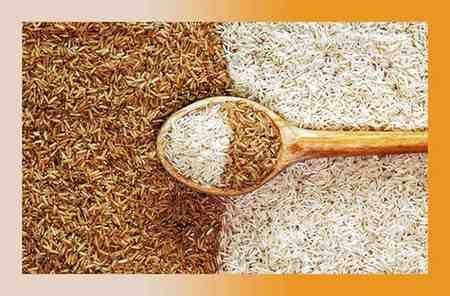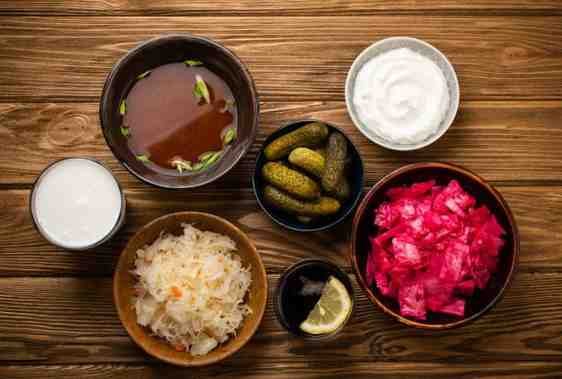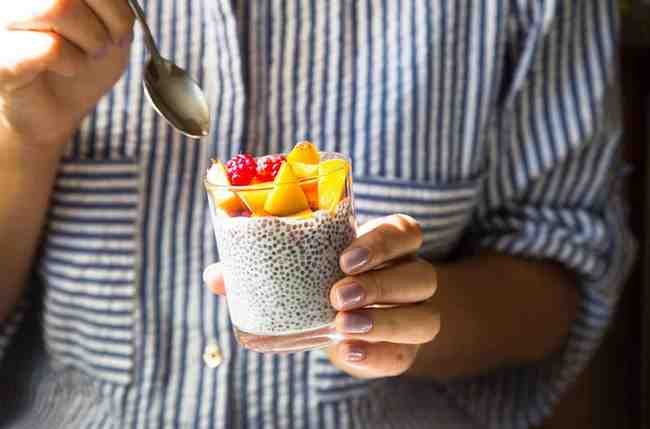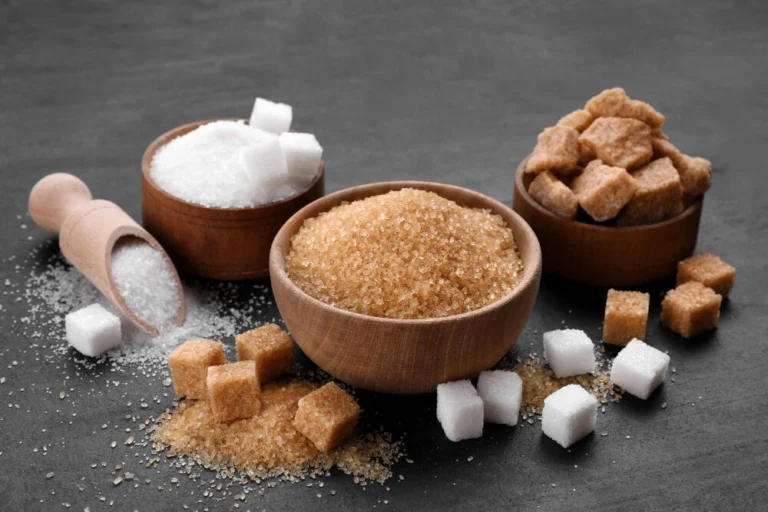Brown Rice vs White Rice – Which One Should You Really Eat?
Welcome to thehealthyguides, your cozy corner of the internet where nutrition myths go to get sorted out—with science, humor, and a big spoonful of common sense. Today’s debate? A grainy one: brown rice vs white rice.
For decades, brown rice has strutted around with a shiny “health halo,” while white rice has been whispered about like the junk food of the grain world. But is that fair? Or is it another case of clever marketing, nutrition myths, and a little bias towards “whole-looking” foods?
By the end of this article, you’ll know exactly:
- The nutritional difference between brown rice and white rice
- How they affect blood sugar, digestion, and long-term health
- When brown rice wins, when white rice wins
- Which rice truly fits your lifestyle and body best
So grab your fork (or chopsticks)—let’s dig in.
1. Why Rice Matters in Nutrition Conversations
Rice isn’t just food. For billions of people across Asia, Africa, and Latin America, it’s daily fuel, cultural comfort, and economic lifeline.
In fact:
- Rice is the primary calorie source for more than half the world’s population.
- Globally, we produce over 500 million tons of rice annually.
- From sushi in Japan to biryani in India to paella in Spain, rice has shaped cuisines and traditions.
Which means the “brown vs white rice” debate isn’t just about one meal—it’s about how we think about health, tradition, and even affordability.
2. Brown Rice vs White Rice: What’s the Actual Difference?
Let’s strip it down to the grain itself.
A single rice kernel has three main parts:
- Bran – the outer layer, rich in fiber and minerals
- Germ – the nutrient-packed embryo of the seed
- Endosperm – the starchy middle, mostly carbs
- Brown rice = whole grain. It keeps the bran + germ + endosperm.
- White rice = refined grain. The bran and germ are milled off, leaving mostly the starchy endosperm.
👉 So essentially, brown rice is the “unshaven, all-natural” version. White rice is the “clean-shaven, polished” version.
3. Nutrition Face-Off: Brown Rice vs White Rice
Here’s the nutrient breakdown per 1 cup cooked (195 g):
| Nutrient | Brown Rice | White Rice |
| Calories | ~218 kcal | ~205 kcal |
| Carbs | 45 g | 45 g |
| Protein | 5 g | 4 g |
| Fiber | 3.5 g | 0.6 g |
| Fat | 1.6 g | 0.4 g |
| Magnesium | 84 mg (20% DV) | 19 mg (5% DV) |
| Manganese | 1.8 mg (88% DV) | 0.7 mg (37% DV) |
| Selenium | 19 mcg (27% DV) | 9 mcg (13% DV) |
| Folate | 8 mcg | 90 mcg (fortified) |
Quick take:
- Brown rice = more fiber, minerals (especially magnesium, manganese, selenium), and antioxidants.
- White rice = lower in fiber, but often fortified with folate, iron, and sometimes B vitamins.
4. Fiber, Satiety & Digestion
Brown rice contains 3–4x more fiber than white rice. Fiber benefits include:
- Slower digestion = steadier blood sugar release
- Improved satiety = you feel fuller longer
- Better gut health = fiber feeds your microbiome
On the flip side:
- White rice digests quickly → ideal for people with digestive issues, post-surgery recovery, or children who need easy-to-digest foods.
Verdict: Fiber lovers, go brown. Sensitive stomachs, stick with white.
5. Glycemic Index & Blood Sugar Control
For people worried about diabetes or blood sugar spikes, here’s the scorecard:
- White rice GI: ~73 (high)
- Brown rice GI: ~68 (medium)
That’s a modest but meaningful difference. Brown rice’s fiber and bran slow down glucose absorption.
👉 Fun fact: Cooking method matters. Pairing rice with veggies, protein, or fat can lower the glycemic impact. Chilling cooked rice and reheating it increases resistant starch, further reducing blood sugar spikes.
6. Weight Management: Which Rice Helps More?
Brown rice is often touted as the “weight-loss rice.” Why?
- Higher fiber = better satiety
- More nutrients = fewer “empty calories”
- Lower GI = steadier energy
But here’s the kicker: portion size and context matter way more than rice color.
- A giant bowl of brown rice can still pack 400+ calories.
- A small, balanced portion of white rice in a veggie-rich meal? Totally fine.
Pro tip: Measure your rice after cooking. Aim for ½–1 cup cooked rice per meal depending on activity level.
7. Nutrient Density & Micronutrients
Brown rice naturally contains:
- Magnesium – essential for muscle and nerve function
- Manganese – supports metabolism and bone health
- Phosphorus – bone and energy production
- B vitamins – energy metabolism
White rice loses these in milling… but many countries fortify white rice with folic acid, iron, and B vitamins to prevent deficiencies.
👉 This makes white rice an unsung hero in reducing birth defects (thanks to folate fortification).
8. Anti-Nutrients in Brown Rice: The Hidden Downside
Brown rice isn’t all sunshine and minerals. The bran layer also contains phytic acid, an “anti-nutrient” that binds minerals like iron and zinc, reducing absorption.
For most healthy people, this isn’t a deal-breaker. But in populations where rice is the staple and nutrient deficiencies are common, white rice may actually be the safer choice.
Pro tip: Soaking or fermenting brown rice reduces phytic acid and improves digestibility.
9. Arsenic in Rice – Should You Worry?
Rice plants absorb arsenic more than other grains. Brown rice tends to have slightly higher arsenic levels because arsenic concentrates in the bran.
Tips to reduce arsenic:
- Rinse rice thoroughly before cooking
- Use extra water (6:1 ratio) and drain excess
- Vary grains (quinoa, barley, millet) to reduce exposure
10. Athletic Performance & Quick Energy
White rice is actually beloved by athletes. Why?
- Quick-digesting carbs = rapid glycogen replenishment
- Low fiber = minimal digestive stress during intense training
That’s why bodybuilders and runners often choose white rice (think chicken and rice classic meals).
Brown rice is better for steady daily energy, but white rice shines in high-performance sports nutrition.
11. Taste, Texture & Culinary Uses
Let’s be honest—nutrition aside, flavor matters.
- Brown rice: Chewy, nutty, hearty. Takes longer to cook (~45 minutes).
- White rice: Soft, fluffy, neutral. Quick to cook (~20 minutes).
Cultural fit:
- Sushi? White rice wins.
- Curry bowls? Brown rice adds depth.
- Comfort food (like congee)? White rice is gentler.
👉 Many chefs mix half brown + half white to balance flavor, texture, and nutrition.
12. Brown Rice vs White Rice in Global Diets
- Japan: White rice is central, but paired with nutrient-rich sides (fish, seaweed, veggies).
- India: White basmati is common, but whole grain and red rice are traditional in some regions.
- U.S. & Europe: Brown rice gained “health food” fame during the 1970s natural foods movement.
This shows: health isn’t just about the rice—it’s about the whole meal.
13. Health Conditions: Which Rice Fits Best?
- Diabetes or insulin resistance → Brown rice has the edge
- Digestive disorders or kids → White rice is gentler
- Pregnancy → White rice may help due to folate fortification
- Athletes → White rice for quick fuel, brown rice for daily meals
- Weight loss → Either, if portions are controlled
14. Environmental & Cost Considerations
- Brown rice: Less processing, but shorter shelf life (bran oils can go rancid).
- White rice: Longer shelf life, often cheaper, and more accessible globally.
From a sustainability view, the environmental footprint is similar—what matters more is local sourcing and avoiding food waste.
15. Healthy Rice Alternatives
If you want to shake things up:
- Quinoa – complete protein, gluten-free
- Barley – high fiber, chewy texture
- Farro – nutty, hearty, great in salads
- Cauliflower rice – low carb, veggie-based
- Wild rice – technically a grass, high in antioxidants
16. The Verdict: Brown Rice vs White Rice
So… which rice should you really eat?
- Nutritionally: Brown rice has more fiber and minerals.
- Digestively: White rice is easier on the stomach.
- Culturally: White rice fits many traditional dishes better.
- For health: The bigger issue is portion size and balance, not rice color.
Final Take:
- If you enjoy brown rice, eat it.
- If you prefer white rice, enjoy it guilt-free—just balance it with veggies and protein.
- Variety (and moderation) beats dogma every time.
17. Sweet, Smart Takeaways
- Brown rice = fiber, minerals, slow energy.
- White rice = easier digestion, fortified nutrients, fast energy.
- Both can fit into a healthy diet when portions are mindful.
- Mix them or alternate depending on the meal.
- Focus on the whole plate: pair rice with vegetables, lean protein, and healthy fats.
18. Your Action Step
Tomorrow, instead of asking, “Should I eat brown rice or white rice?”, ask:
👉 “How can I make my rice meal more balanced?”
Try:
- Adding extra veggies into your rice bowl
- Swapping half your rice for beans or lentils
- Testing a new grain (quinoa, farro) once this week
Because at the end of the day, it’s not about brown vs white—it’s about building meals that fuel your body and taste buds.
Keywords naturally included:
- brown rice vs white rice nutrition
- glycemic index of brown vs white rice
- is brown rice healthier than white rice
- brown rice weight loss benefits
- white rice digestion benefits
- brown rice anti-nutrients
- arsenic in rice
- healthy rice alternatives
FAQs: Brown Rice vs White Rice
1. Is brown rice healthier than white rice?
Yes—but only slightly. Brown rice contains more fiber, vitamins, and minerals than white rice. However, the difference isn’t dramatic, and both can be part of a healthy diet if eaten in moderation.
2. Is brown rice better for weight loss?
Brown rice can help with weight management because its fiber content keeps you fuller for longer. But remember, portion size is key. Eating too much brown rice can still lead to excess calories and weight gain.
3. Is white rice bad for you?
Not at all. White rice isn’t “bad”—it’s simply more refined. It digests faster, which can be helpful for people with sensitive stomachs, children, or athletes needing quick energy. When paired with vegetables and protein, it’s perfectly healthy.
4. Which rice is better for diabetics: brown or white?
Brown rice has a slightly lower glycemic index, meaning it raises blood sugar more slowly than white rice. For people with diabetes or insulin resistance, brown rice is usually the better choice.
5. Does brown rice contain anti-nutrients?
Yes, brown rice contains phytic acid, which can reduce mineral absorption. However, soaking or fermenting brown rice before cooking minimizes this effect, and for most people with balanced diets, it’s not a major concern.
6. Does white rice have any health benefits?
Yes. White rice is often fortified with folic acid and iron, making it beneficial for pregnant women and populations at risk of deficiencies. It’s also easier to digest, making it a safe choice during illness or recovery.
7. Is there arsenic in rice?
Rice can contain small amounts of arsenic, and brown rice tends to have slightly more because arsenic accumulates in the bran. Rinsing rice and cooking it in excess water (like pasta) helps reduce arsenic levels.
8. Which rice is better for athletes?
White rice is often preferred by athletes because it digests quickly and helps replenish glycogen stores after workouts. Brown rice provides steady energy, making it better for everyday balanced meals.
9. Can I mix brown rice and white rice together?
Absolutely! Mixing both gives you a balance of flavor, texture, and nutrition. Many people cook half-and-half to get the chewiness of brown rice with the fluffiness of white.
10. What’s the healthiest way to eat rice?
The healthiest way is to keep portions moderate (about ½ to 1 cup cooked per meal) and pair rice with vegetables, lean protein, and healthy fats. Variety also helps—try other grains like quinoa, barley, or millet to diversify your nutrition.
Conclusion: Brown Rice vs White Rice – The Real Winner
So, after all this back-and-forth… is there a clear winner in the brown rice vs white rice debate?
Not really. And that’s the point.
- Brown rice shines for its fiber, minerals, and steady energy.
- White rice wins when it comes to easy digestion, quick energy, and traditional culinary uses.
- Both can be healthy, both can be enjoyed, and both can fit beautifully into a balanced diet.
Instead of worrying about which rice is “good” or “bad,” the smarter move is to focus on the bigger picture: portion sizes, variety, and what else is on your plate. Rice becomes nourishing when paired with colorful veggies, lean protein, and healthy fats.
If you’re looking for more structured approaches, check out our Diet Plans section for meal guides tailored to weight loss, muscle gain, or balanced living.”
High protein breakfasts aren’t just good for your body—they also stabilize mood and energy, reducing anxiety crashes later in the day. Learn more in our Mental Health section.
For more tips and support, visit our Facebook page.







